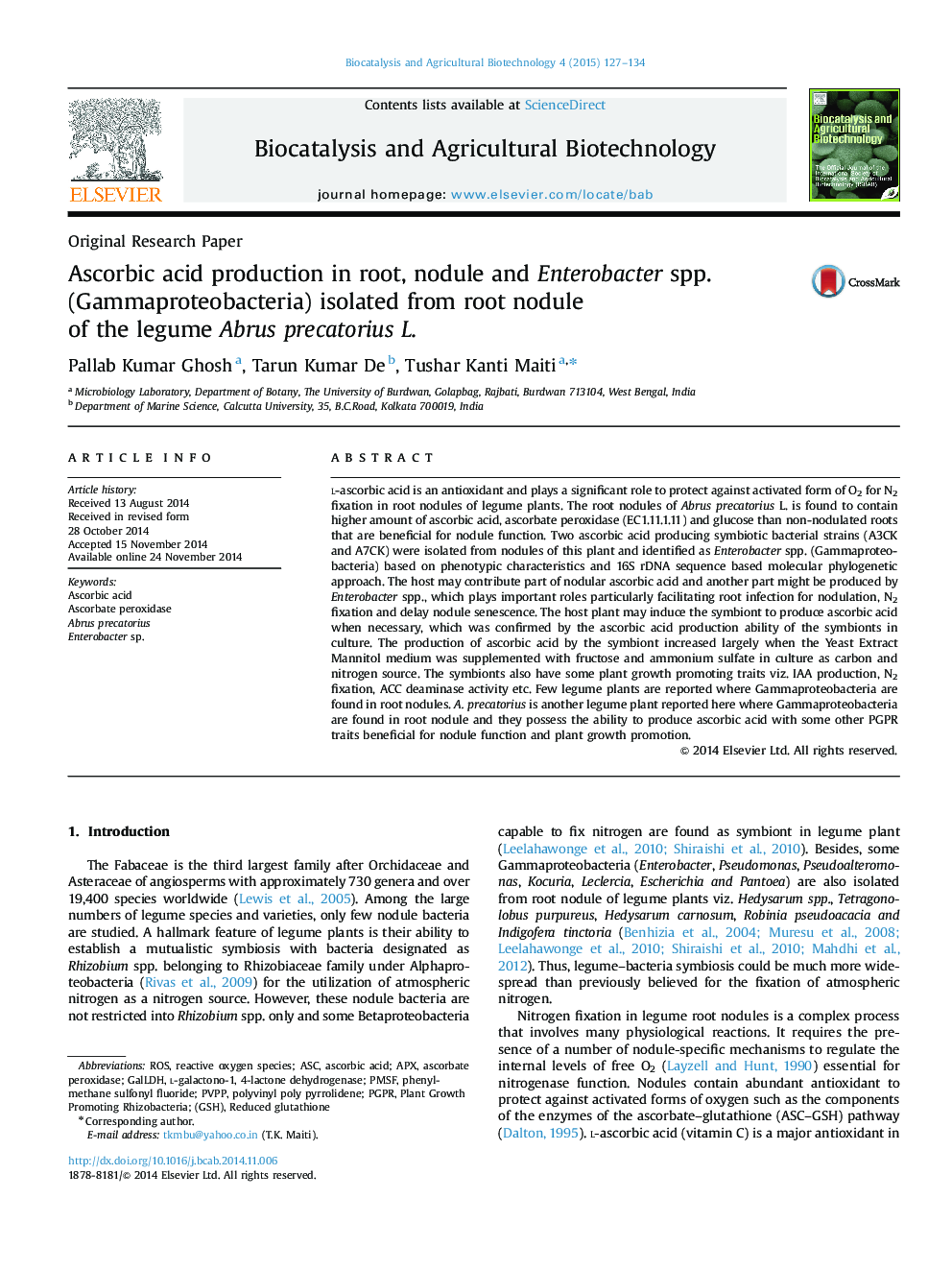| Article ID | Journal | Published Year | Pages | File Type |
|---|---|---|---|---|
| 2075429 | Biocatalysis and Agricultural Biotechnology | 2015 | 8 Pages |
l-ascorbic acid is an antioxidant and plays a significant role to protect against activated form of O2 for N2 fixation in root nodules of legume plants. The root nodules of Abrus precatorius L. is found to contain higher amount of ascorbic acid, ascorbate peroxidase (EC1.11.1.11) and glucose than non-nodulated roots that are beneficial for nodule function. Two ascorbic acid producing symbiotic bacterial strains (A3CK and A7CK) were isolated from nodules of this plant and identified as Enterobacter spp. (Gammaproteobacteria) based on phenotypic characteristics and 16S rDNA sequence based molecular phylogenetic approach. The host may contribute part of nodular ascorbic acid and another part might be produced by Enterobacter spp., which plays important roles particularly facilitating root infection for nodulation, N2 fixation and delay nodule senescence. The host plant may induce the symbiont to produce ascorbic acid when necessary, which was confirmed by the ascorbic acid production ability of the symbionts in culture. The production of ascorbic acid by the symbiont increased largely when the Yeast Extract Mannitol medium was supplemented with fructose and ammonium sulfate in culture as carbon and nitrogen source. The symbionts also have some plant growth promoting traits viz. IAA production, N2 fixation, ACC deaminase activity etc. Few legume plants are reported where Gammaproteobacteria are found in root nodules. A. precatorius is another legume plant reported here where Gammaproteobacteria are found in root nodule and they possess the ability to produce ascorbic acid with some other PGPR traits beneficial for nodule function and plant growth promotion.
